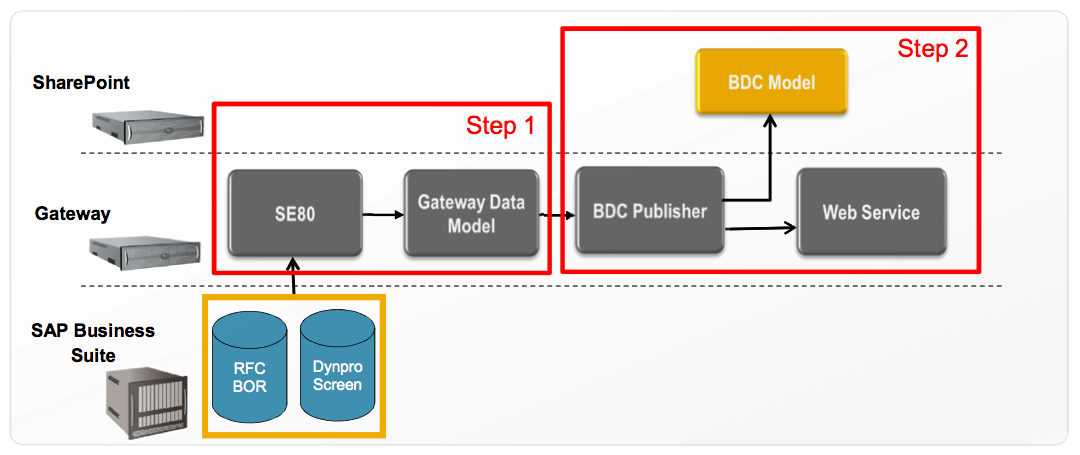This blog is earlier published on SAP Community Network Blogs
A major bottleneck in applying Duet Enterprise 1.0 is the time it takes the SAP + Microsoft development team to unlock SAP data via Gateway to SharePoint. You have to define the service interface in ES Builder, create a proxy in transaction SPROXY, and next via transaction SE38 realize the GenIL model. The latter requires a lot of handcrafting ABAP code to do the mapping from Gateway runtime context and data representation to SAP backend, and vice versa. Code that follows a pattern, so a good candidate for code generation. This was a major pain point experienced by us when initially applying Duet Enterprise 1.0 within the Ramp-Up in 2010, and with emphasis reported back to the Duet Enterprise product team.
In the coming Feature Pack 1 version, the Duet Enterprise product team has evidently got the message. FP1 comes with multiple generator tools to ease and speed-up the realization of the internal Gateway Model (new name for GenIL model) for your application scenarios. Handcrafting is largely eliminated and replaced by full-automatic generation of first the mapping code to unlock the SAP data via NetWeaver Gateway 2.0, and next the required SAP Gateway service proxy, plus the SharePoint BDC model. The latter can be handed over to SharePoint side to import the External ContentType definition into Business Connectivity Services. Something that took us with version 1.0 several days to set things up at both SAP as SharePoint side, now is done in matters of minutes. Very appreciated side-effect of this is that it enables agile development: if the initial Model does not fit the requested application context, just change the mapping in the tooling and regenerate. With handcrafting approach you would loose a lot of elapse time here rearranging and testing your own mapping code.

Of course not all now suddenly comes for free. Before you start the Gateway Model generation, you still first must think about the data integration architecture to achieve your application scenario. An action that involves and requires consensus of both the SharePoint and SAP backend architects plus developers. The usage of the FP1 / Gateway 2.0 generation tools itself put some constraints on the SAP backend data sources; BOR, RFC or Dynpro Screens. Basically it comes down to it that the backend data entities must provide at minimum both a ‘Query’ and ‘ReadItem’ operation, and also ‘Create/Update/Delete’ operations for update scenario via SharePoint.
What if the available SAP backend entities do not self satisfy the requested integration pattern and/or the generation constraints? Even then, it is far easier and better manageable to realize a custom wrapper RFC within the ERP level that does satisfy the pattern + constraints, than apply the manual Gateway Model code crafting. Spoken from own experiences…

No comments:
Post a Comment